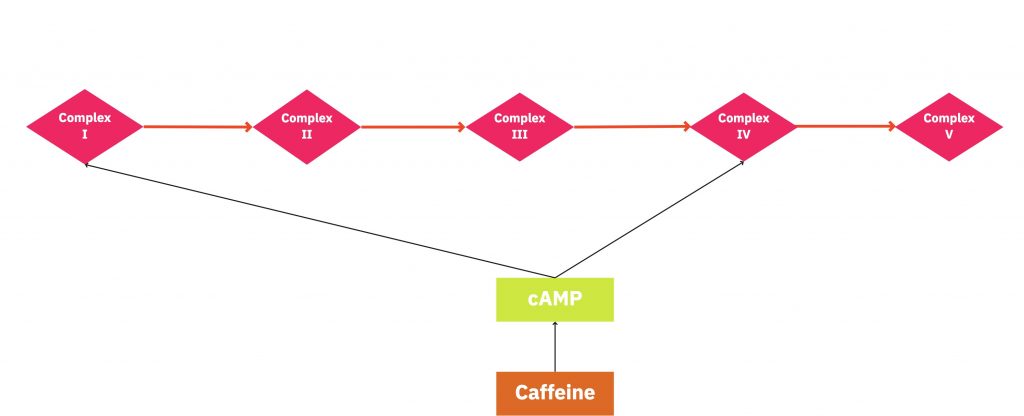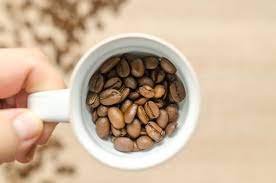Our next mitochondrial supplement is caffeine. The term ‘caffeine’ originates from the Arabic word ‘qahweh.’ Chemists first isolated it in 1819 from coffee, and it is naturally present in chocolate, tea, and cacao pods. Beans, guarana, and kola nuts also contain caffeine. Caffeine is very popular and more than eighty percent of adults in North America regularly consume caffeine.
Caffeine is able to inhibit cyclic adenosine monophosphate (cAMP)-phosphodiesterase. This
inhibition leads to increased levels of cAMP and the activation of protein kinase A.
Elevating cAMP levels enhances the efficiency of complexes I and IV, leading to a short-term boost in ATP production. However, over time, caffeine, with a chemical structure similar to adenosine, can decrease ATP production. Caffeine binds to adenosine receptors when ATP is broken down, giving the body a false sense of wakefulness and maintaining normal function. However, over time the body begins to produce more adenosine receptors. Adenosine makes you tired because it slows down the activity of neurons. Adenosine binds to adenosine receptors on nerve cells, leading to the release of proteins that inhibit nerve cell activity.
Adenosine normally binds to the A1 and A2 receptors found in the brain, nervous system, muscle, adipose tissue, heart and vascular endothelium. Adenosine can also improve blood circulation and increase blood flow to the heart. Adenosine also increases renal blood flow. The phosphate group of ATP breaks away and can form adenosine diphosphate (ADP) or adenosine monophosphate (AMP) which releases energy. Other things that can bind to adenosine receptors are theophylline and theobromine. Theophylline, a phosphodiesterase inhibiting drug, exists in tea or cocoa. Theobromine, found in cocoa and tea, widens the blood vessels.

https://www.sciencedirect.com/science/article/pii/S0261561418324269


